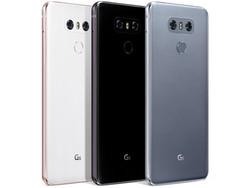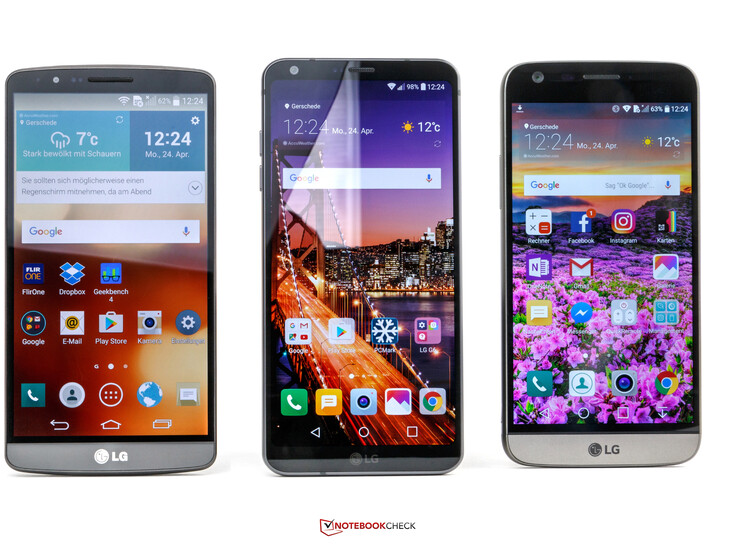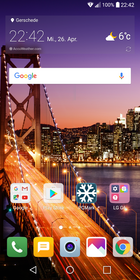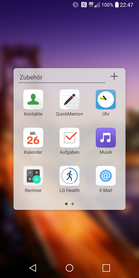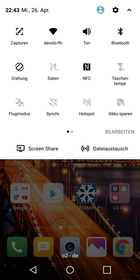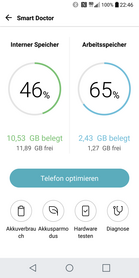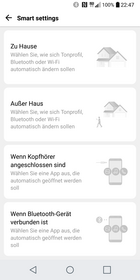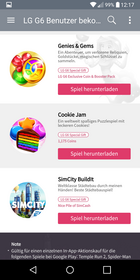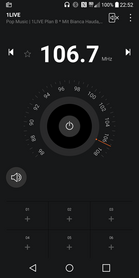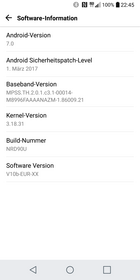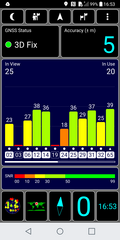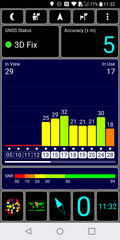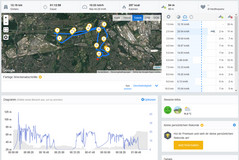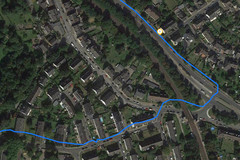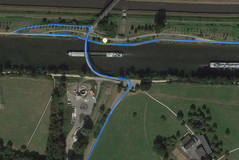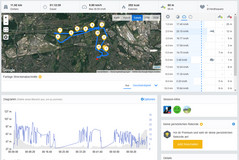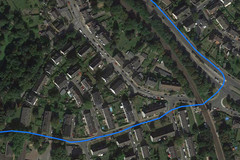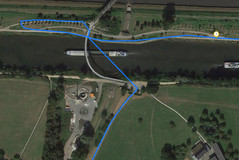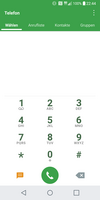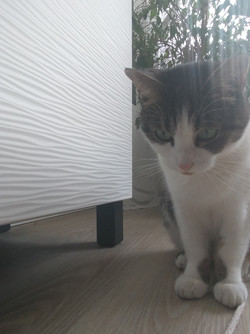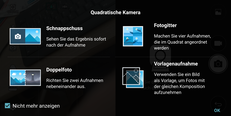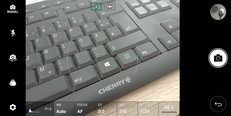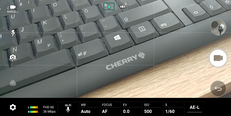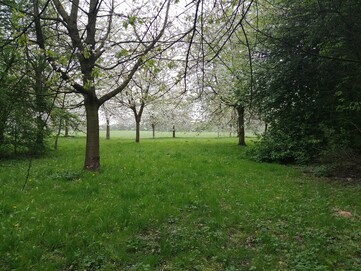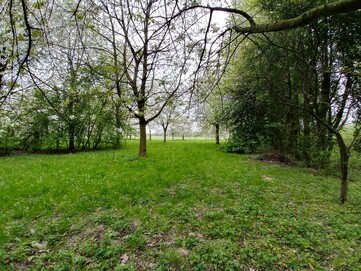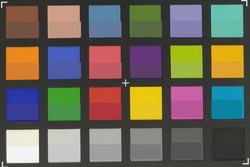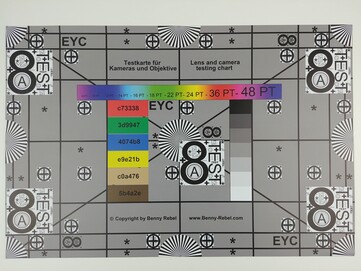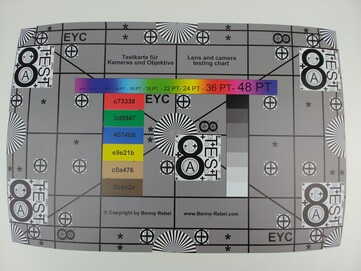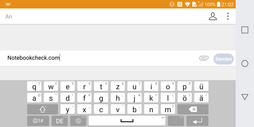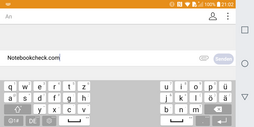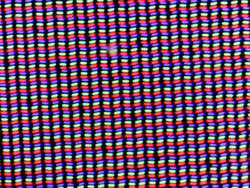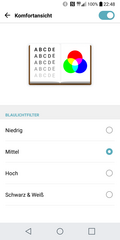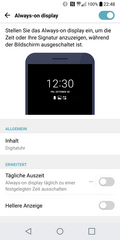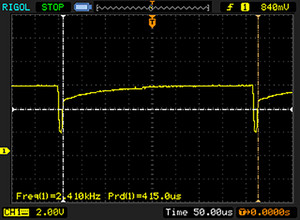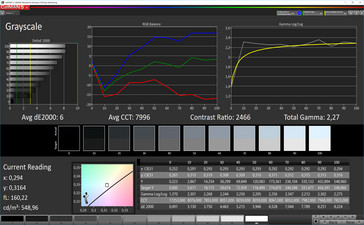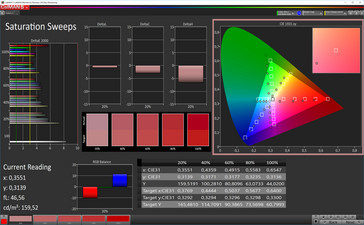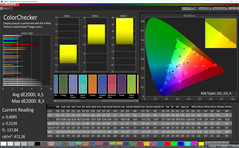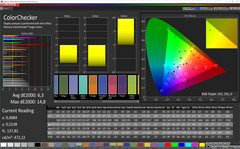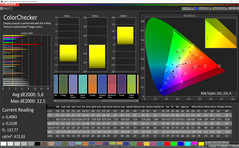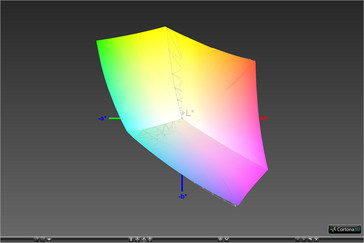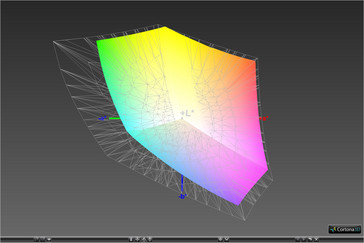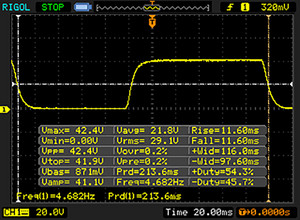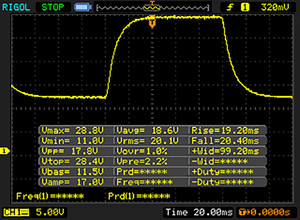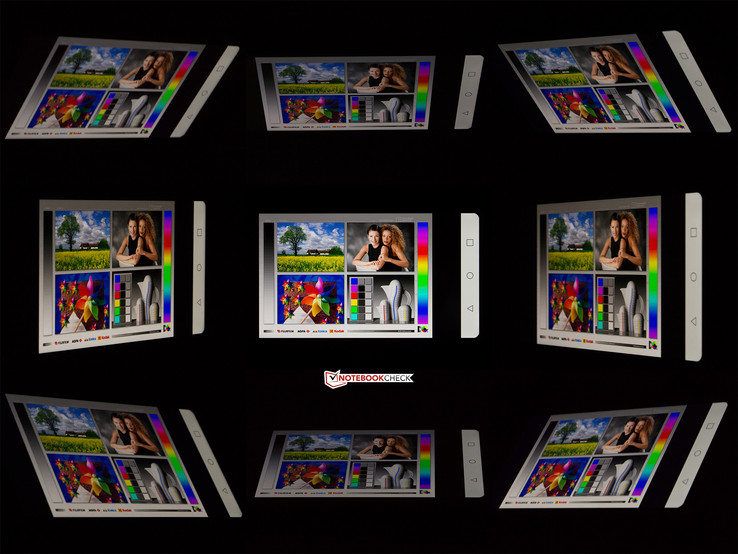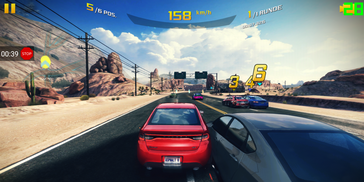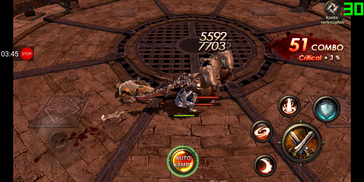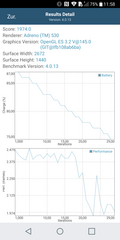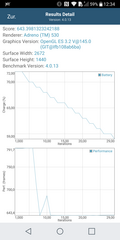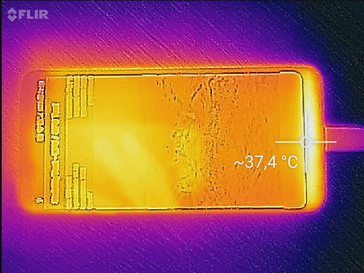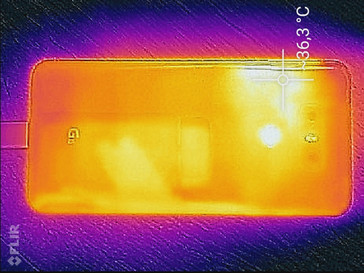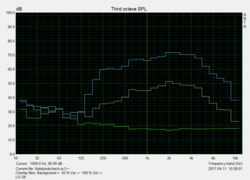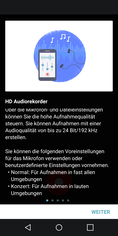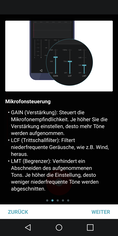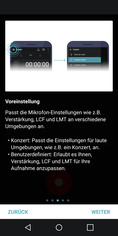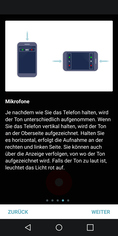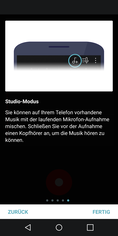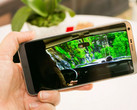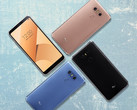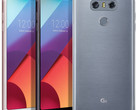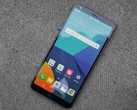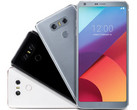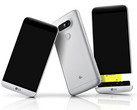LG G6 Smartphone Review
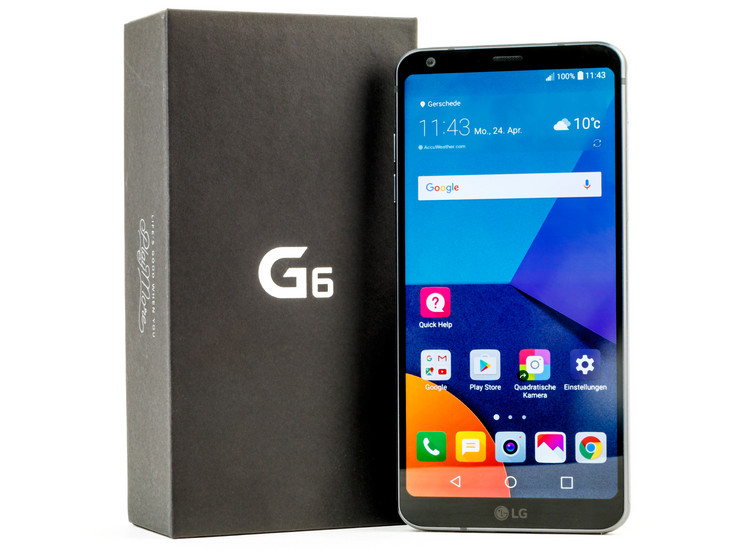
For the original German review, see here.
The LG G5 from the South Korean manufacturer was an interesting experiment about a modular smartphone. Unfortunately, the modules were limited, and the customers did not really accept the concept. This is supposed to change with the LG G6, which got a complete overhaul.
LG waived the modular design for its latest flagship device completely and even removed the replaceable battery for the first time. The battery capacity grew from 2800 mAh to 3300 mAh in return, and the other specifications are also good, although not all of them meet the high-end claim.
This is especially true for the SoC, because the Snapdragon 821 is a last year's model, while the upcoming rivals will most likely use the newer Snapdragon 835 or the Exynos 8895 for the Galaxy S8 models, respectively. Bluetooth 5.0 is therefore not available on the new LG smartphone. 4 GB RAM and 32 GB UFS storage are decent though. You also get LTE Cat. 11 as well as a reworked dual-camera. The storage is still expandable and the case of the LG G6 turns out to be a small tank.
LG uses different regional models for the G6, which is unfortunate. They are supposed to be adjusted to the requirements of the specific markets. The European model, for example, does not get wireless charging or the improved DAC chip.
Rivals for the LG G6 are all high-end models including the Samsung Galaxy S8, Huawei P10, iPhone 7, HTC U Ultra, Google Pixel XL, Xiaomi Mi 5s, Lenovo Moto Z, and Sony Xperia XZ.
Update 12/04/2017: LG has published a software update for the G6 featuring facial recognition. Further details can be found in the Software and Input Devices & Handling sections.
Case
The aluminum chassis of the LG G6 comes in three different color choices: Mystic White, Ice Platinum, and Astro Black. We review the black model, which looks very good thanks to its particularly deep, black color. The aluminum frames also have different colors depending on the choice. The white model gets a slightly pink, and the bluish model a silver frame.
The LG G6 feels great in the hand and is noticeable narrower than the LG G5, and also a bit shorter, but the new model is 0.2 mm thicker. The visible metal frame and the glass surfaces leave a sophisticated impression, but the glass is a real fingerprint magnet, which is particularly noticeable on our black unit. LG uses Corning Gorilla Glass 3 at the front and Gorilla Glass 5 at the rear. This decision was made due to different bending characteristics since the glass at the rear is rounded, but flat at the front. LG does not use 2.5D edges, either, which is supposed to reduce strain on the hands.
The build quality of the LG G6 is excellent: gaps are consistently small, and the material transitions are precise. Twisting attempts are no problem for the smartphone and only a lot of pressure will create some ripples on the screen. Both the microSD and the Nano SIM are unfortunately located in a tray made out of plastic. Fans of replaceable batteries will be disappointed because LG is now one of the last manufacturers switching to a non-removable battery for its high-end smartphone.
In return, the G6 is now protected against dust and water according to IP68 and passed 14 tests according to the American MIL-STD 810G against drops, rain, salt spray, humidity, temperature shock, vibration, sunlight, deep pressure, sand and dust, submerging in water, as well as two different test methods for resistance against heat and cold. LG does not reveal any details, but the G6 survives multiple drops from a height of 1.2 meters (~4 feet), 4 hours at a temperature of 63 °C as well as a full day at -21 °C. This is a really tough smartphone.
Connectivity
Similar to the LG G5, the G6 supports DLNA, Wi-Fi Direct, Miracast, and Android Beam. The USB port once again uses the modern Type-C connector, but is still limited to the 2.0 standard. It supports OTG for the attachment of external drives and peripherals, but HDMI output via SlimPort adapter is not possible. NFC, Bluetooth 4.2, and an FM radio are included, but the infrared transmitter is gone.
The card tray carries one Nano SIM as well as a microSD card. Replacing the SIM card automatically results in a restart of the smartphone. The microSD slot supports all common standards, and the current maximum capacity on the market is 256 GB with a theoretical maximum of 2 TB for the SDXC standard. Memory cards cannot be formatted as internal storage, but app files can be transferred there.
Software
LG ships the G6 with Google's Android 7.0 Nougat with LG's own user interface. It lacks an app drawer, but the adjustments are otherwise limited to the design. The manufacturer also installs some tools, including LG Health, HD Audio Recorder, Smart Doctor, LG Smart World, QuickMemo+, and others we already know from previous models. There are only three third-party apps: Evernote, Facebook, and Instagram. All of them, except for the Notes app, can be removed.
LG also includes in-game items for selected games for $200, which is a nice bonus for smartphone gamers.
Update 12/04/2017: After sending in our review unit to LG in order to have our pre-production firmware replaced with the current one we have noticed, that Google’s security patches have been updated to 07/01/2017. In addition, a facial recognition feature similar to what some Samsung phones offer has now been added as well. Details can be found in the Input Devices & Handling section.
Communication and GPS
Mobile Internet connections can be established via LTE Cat. 11 on the LG G6, which covers a wide range of frequencies. Even travelers should not have any problems to get a signal. The number of GSM and 3G bands is also very good. In a metropolitan area, we usually had a stable LTE connection and no signal quality problems. The fast LTE module supports download speeds of up to 600 Mbps and upload speeds of 75 Mbps.
The WLAN module of the LG G6 supports the IEEE 802.11 standards a/ac/b/g/n in 2.4 as well as 5 GHz networks. We tested the transfer rates with our reference router Linksys EA8500. The results are good, but they could be better. It looks like LG does not use the MIMO antenna technology. The dampening in the 2.4 GHz network is excellent at -30 dBm in close proximity to the router and it is just slightly stronger in a 5 GHz network. The dampening never surpasses -62 dBm, even at a distance of ten meters (~33 feet) to the router and with one wall in between. Of our reviewed devices, few have such good results.
| Networking | |
| iperf3 transmit AX12 | |
| Samsung Galaxy S8 | |
| Huawei P10 | |
| Xiaomi Mi 5s | |
| LG G6 | |
| Asus ZenFone 3 Deluxe ZS570KL | |
| iperf3 receive AX12 | |
| Samsung Galaxy S8 | |
| LG G6 | |
| Xiaomi Mi 5s | |
| Huawei P10 | |
| Asus ZenFone 3 Deluxe ZS570KL | |
The LG G6 can locate its position via GPS, BeiDou, Galileo, and GLONASS satellite networks. The process is extremely fast outdoors and also pretty precise at 5 meters (~16 feet). The situation is similar indoors, but the satellite fix is not quite as fast and takes about 5 seconds.
We took the smartphone on a bicycle ride and compared the accuracy with the Garmin Edge 500. The performance of the LG G6 is unfortunately on par with many smartphones and there is too much time between the locations, so there are occasional shortcuts. However, many other smartphones are worse, either, and the performance is sufficient for everyday navigation purposes. Still, rivals like the Samsung Galaxy S8 show that GPS modules in smartphones can be more precise.
Telephone Functions and Voice Quality
LG only changed the visuals for the phone app compared to the default Android version. It is very simple to use.
The two AOP microphones leave an excellent impression and help to reach the good voice quality of the LG G6. There is absolutely no criticism when you hold the smartphone against your ear; both sides are easy to understand. There are some reverberations in the hands-free mode, but it is generally no problem to place the smartphone on the desk next to you. Our test sample was unfortunately shipped without the usual headset, so we cannot say anything about it.
Cameras
One step back for the front camera: LG only ships the G6 with a 5 MP sensor at the front, while the G5 took selfies at up to 8 MP. The other pixels are probably reserved for the wide-angle feature, because the sensor can take pictures at 82° as well as 100°. The light sensitivity is okay at an aperture of f/2.2, but the pixels are not very large at just 1.12 μm. The front camera only has a fixed focus, but supports automatic HDR and can record 1080p videos. The quality of the pictures is actually decent in good lighting conditions, despite the low resolution, but backlight is a problem for the camera.
The main camera is once again equipped with two lenses, and both of them have 13 MP sensors. The pixels are once again small at just 1.12 μm. While the standard lens (71°) has an aperture of f/1.8, the wide-angle (125°) captures less light at f/2.4. Most features like optical and electronic image stabilization are reserved for the standard lens. There is also a difference in the Pro mode because you cannot select the focus point manually for wide-angle shots. You can manually adjust the ISO value (ISO 50-3200), white balance, and shutter speed (1/3200 - 30s). RAW pictures are also reserved for the manual mode. The so-called "Square Mode" is a new feature and includes four functions (see screenshots) and is certainly interesting for social media purposes.
Sample picture LG G6: Standard camera 71° on the left, wide-angle 125° on the right
The pictures of the LG G6 are extremely sharp, and this does not change when you enlarge the picture. This creates great pictures in daylight. The handling is simple and quick thanks to the high trigger speed and the good automatic HDR mode, so the LG G6 is an excellent device for snapshots. The camera also makes most of darker environments, more than we actually expected based on the specs, and still takes good pictures. It does not capture as much light as the Galaxy S8, but the results look very balanced. The wide-angle is not so convincing in low-light situations and the pictures lack details in a direct comparison, but the additional lens is a nice feature in general, which adds value for nature and architectural pictures in particular.
We really like the manual video mode, which offers plenty of settings. You can change the white balance, shutter speed, video size, frame rate, bit rate, as well as the sound quality. You can select anything from 16:9, 18:9 or even 21:9 for HD, only UltraHD (up to 51 Mbps) is limited to 16:9 at 30 frames per seconds (also 1, 2, or 24 FPS). 1080p videos can be recorded at up to 60 FPS and the smaller HD format up to 120 FPS. These resolutions can be combined with lower frame rates as well. Both the video stabilization and the tracking focus are only available up to 1080p (30 FPS). We like the quality of recorded video and the sensor handles fast movements and sudden lighting changes very well. Sound can be recorded in Hi-Fi stereo and sounds really good since the AOP microphones (Acoustic Overload Point) do a good job. Their highlight is the ability to record clear sound in loud environments (up to 129 dB(A)), and they support a wide range of frequencies.
We have another look at the main camera of the LG G6 under controlled lighting conditions. We check the color accuracy with the X-Rite ColorChecker Passport and the result is good. Colors are slightly oversaturated, the grayscale is a bit brighter, and the white balance is a tad warm. Yellow is almost identical to the ColorChecker and looks very rich.
We also take a picture of the test chart under identical lighting conditions and the impression of the LG G6 is once again good, and even the smallest details in the center are visible. The level of detail drops a bit towards the edges, but is still very good. The wide-angle lens is not quite as sharp, but handles the color gradients better. You can also see the fisheye characteristics caused by the lens curvature, because the content in the corners is heavily rounded.
Accessories and Warranty
Besides the usual pamphlets (warranty, safety, quick-start guide), the G6 is shipped with a modular power adapter (9.0/5.0V, 1.8A), USB cable (Type-A to Type-C), SIM tool, headset, and a suede leather cloth. LG does not offer any specific accessories for the smartphone.
The warranty period is 24 months and cannot be expanded. Please see our Guarantees, Return policies and Warranties FAQ for country-specific information.
Input Devices & Handling
The capacitive touchscreen of the LG G6 recognizes up to ten inputs simultaneously. Corning's Gorilla Glass 3 surface provides excellent gliding capabilities and executes inputs very precisely and reliably. Nothing changed for the onscreen keyboard and you get the familiar LG layout. It is also possible to download other keyboards from the Play Store.
The power button is located at the back and also accommodates the fingerprint scanner. The latter unlocks the smartphone quickly, but is not always reliable. Especially a moist finger can be a problem for the scanner. Other unlocking methods are PIN, pattern and knocking code. You can also activate the display or activate standby via double tap on the screen, which is very handy when the smartphone is sitting on a table.
Google's Assistant, which is already familiar from the Google Pixel XL, is also preloaded on the LG G6. The volume buttons are perfectly integrated into the chassis and also act as quick access buttons for the Notes app and the camera. It is unfortunately not possible to reassign them. One thing we miss on the G6 is a one-hand operating mode.
Update 12/04/2017: The new facial recognition feature is fairly straightforward to setup. However, it is not included in LG‚’s initial setup when first starting the phone and disregarded in favor of the fingerprint reader or a regular PIN code. Activation and setup can be found under screen lock settings instead of security. During setup, LG states that facial recognition is less secure and easier to bypass than other methods. Once activated facial recognition worked very well and reliable, and took around one second to unlock our phone and preset us with the home screen. A setting, where the phone unlocks but remains in the lock screen is also available. Various lighting situation had almost no effect on facial recognition except for a slightly longer duration. Only in very dark environments did facial recognition fail us. Infrared sensors, such as the iPhone X uses for facial recognition, are clearly at an advantage in situations like these.
Display
The LG G6 is one of the first smartphones with the new aspect ratio 2:1 (or 18:9, respectively). The advantage is that the smartphone gets more screen surface without getting wider. LG's G6 has a 5.7-inch panel with 2880x1440 pixels (QHD+), and the high pixel density (565 PPI) ensures a crisp picture.
The comparatively large panel surface is not comparable to common 16:9 models, because the displays are wider and therefore offer more panel surface at the same diagonal size. The display of the Moto Z (5.5") is not much smaller than the new device. The following table shows different panel sizes:
| Smartphone | LG G6 | Galaxy S8 | LG G5 | Huawei P10 | Huawei Mate 9 | Xiaomi Mi 5s | Moto Z | 5.7" (16:9) |
|---|---|---|---|---|---|---|---|---|
| Panel area | 83.84 cm² | 85.38 cm² | 77.44 cm² | 71.70 cm² | 95.96 cm² | 73.12 cm² | 83.39 cm² | 89.57 cm² |
LG once again uses an IPS panel, which is called Univisium display. Besides the new shape, and the rounded corners, it also supports Dolby Vision as well as HDR10. It is one of the few smartphone displays certified for the new display technologies.
We tested the luminance of the panel with activated brightness sensor on a pure white background. The G6 manages 611 nits on average in combination with a decent brightness distribution of 89%. The more practical APL50 measurements with evenly distributed dark and bright contents, determines a similar result at 610 nits in the center of the screen. The maximum luminance is, however, lower when you deactivate the sensor. The manual control only reaches up to 549 nits, although this is still very bright. There is no visible clouding. There is no backlight bleeding.
We can detect PWM for the brightness control, which is rather unusual for IPS smartphone displays. This is unfortunate, but the frequency is very high, so even sensitive users should not have any problems.
| |||||||||||||||||||||||||
Brightness Distribution: 89 %
Center on Battery: 646 cd/m²
Contrast: 2809:1 (Black: 0.23 cd/m²)
ΔE ColorChecker Calman: 4.5 | ∀{0.5-29.43 Ø4.78}
ΔE Greyscale Calman: 6 | ∀{0.09-98 Ø5}
99.05% sRGB (Argyll 1.6.3 3D)
67.74% AdobeRGB 1998 (Argyll 1.6.3 3D)
73.6% AdobeRGB 1998 (Argyll 3D)
99.2% sRGB (Argyll 3D)
73% Display P3 (Argyll 3D)
Gamma: 2.27
CCT: 7996 K
| LG G6 IPS LCD, 2880x1440, 5.7" | LG G5 IPS Quantum, 2560x1440, 5.3" | Apple iPhone 7 Plus IPS, 1920x1080, 5.5" | Asus ZenFone 3 Deluxe ZS570KL AMOLED, 1920x1080, 5.7" | Samsung Galaxy S8 Plus Super AMOLED, 2960x1440, 6.2" | Lenovo Moto Z AMOLED, 2560x1440, 5.5" | Huawei P10 LTPS, 1920x1080, 5.1" | |
|---|---|---|---|---|---|---|---|
| Screen | -19% | 10% | 4% | 25% | 17% | -20% | |
| Brightness middle (cd/m²) | 646 | 784 21% | 557 -14% | 464 -28% | 560 -13% | 485 -25% | 547 -15% |
| Brightness (cd/m²) | 611 | 774 27% | 553 -9% | 468 -23% | 562 -8% | 490 -20% | 556 -9% |
| Brightness Distribution (%) | 89 | 91 2% | 97 9% | 85 -4% | 93 4% | 92 3% | 86 -3% |
| Black Level * (cd/m²) | 0.23 | 0.43 -87% | 0.35 -52% | 0.43 -87% | |||
| Contrast (:1) | 2809 | 1823 -35% | 1591 -43% | 1272 -55% | |||
| Colorchecker dE 2000 * | 4.5 | 6.5 -44% | 1.4 69% | 3.2 29% | 1.7 62% | 2.1 53% | 4.8 -7% |
| Colorchecker dE 2000 max. * | 8.3 | 11.7 -41% | 3.1 63% | 10.5 -27% | 3.4 59% | 5.5 34% | 8.8 -6% |
| Greyscale dE 2000 * | 6 | 8 -33% | 1.3 78% | 1.4 77% | 1.6 73% | 2.6 57% | 4.5 25% |
| Gamma | 2.27 97% | 2.22 99% | 2.21 100% | 2.27 97% | 2.13 103% | 2.23 99% | 2.39 92% |
| CCT | 7996 81% | 8699 75% | 6667 97% | 6590 99% | 6435 101% | 6843 95% | 7194 90% |
| Color Space (Percent of AdobeRGB 1998) (%) | 67.74 | 68.08 1% | 63.1 -7% | 81.57 20% | 88.14 30% | ||
| Color Space (Percent of sRGB) (%) | 99.05 | 97.46 -2% | 99.83 1% | 99.87 1% | 100 1% |
* ... smaller is better
Screen Flickering / PWM (Pulse-Width Modulation)
| Screen flickering / PWM detected | 2410 Hz | ≤ 35 % brightness setting | |
The display backlight flickers at 2410 Hz (worst case, e.g., utilizing PWM) Flickering detected at a brightness setting of 35 % and below. There should be no flickering or PWM above this brightness setting. The frequency of 2410 Hz is quite high, so most users sensitive to PWM should not notice any flickering. In comparison: 53 % of all tested devices do not use PWM to dim the display. If PWM was detected, an average of 8108 (minimum: 5 - maximum: 343500) Hz was measured. | |||
The black value of the LG G6 is excellent at just 0.23 cd/m² and is superior to any other rival with an LC display. This, combined with the high luminance, results in a great contrast ratio of 2809:1. LG clearly has the edge in this category and is only beaten by OLED screens, which can show pure black since individual pixels can be turned off.
We checked the color accuracy of the Univisium display with a spectrophotometer and the analysis software CalMAN. There is a clear improvement compared to the LG G5, but the results are mediocre for a high-end smartphone. The grayscale shows deviations of up to 8.2 and brighter shades reveal a blue cast, but it is not annoying in practice. The situation is similar for the colors; we can measure a DeltaE of up to 14.8 depending on the target color space. The LG G6 uses an extended sRGB color space, which is close to the P3 gamut, but cannot cover the latter.
Display Response Times
| ↔ Response Time Black to White | ||
|---|---|---|
| 23.2 ms ... rise ↗ and fall ↘ combined | ↗ 11.6 ms rise | |
| ↘ 11.6 ms fall | ||
| The screen shows good response rates in our tests, but may be too slow for competitive gamers. In comparison, all tested devices range from 0.1 (minimum) to 240 (maximum) ms. » 52 % of all devices are better. This means that the measured response time is worse than the average of all tested devices (20.2 ms). | ||
| ↔ Response Time 50% Grey to 80% Grey | ||
| 39.6 ms ... rise ↗ and fall ↘ combined | ↗ 19.2 ms rise | |
| ↘ 20.4 ms fall | ||
| The screen shows slow response rates in our tests and will be unsatisfactory for gamers. In comparison, all tested devices range from 0.165 (minimum) to 636 (maximum) ms. » 59 % of all devices are better. This means that the measured response time is worse than the average of all tested devices (31.6 ms). | ||
The very bright panel is a big advantage outdoors, just like the high contrast ratio. Even sunny days are not a huge issue and the content is always visible. Only reflections of the panel glass can be annoying under direct sunlight.
Performance
The Qualcomm Snapdragon 821 in the LG G6 is a high-end SoC from last year. The differences compared to the Snapdragon 820 from the LG G5 are small; both the CPU and GPU got small speed bumps. The SoC is supported by 4GB LPDDR4-RAM. Considering the newer Snapdragon 835, which is manufactured in 10 nm and promises better efficiency, the 821 already looks a bit outdated. It is certainly not as fast, but especially the lack of additional features like Bluetooth 5.0 is unfortunate.
All our benchmarks show the expected performance for this SoC. This means the LG G6 is a powerful device, and this is supported by the smooth system performance, but some rivals perform better in the benchmarks, including the Huawei P10 and the Lenovo Moto Z.
| AnTuTu v6 - Total Score (sort by value) | |
| LG G6 | |
| LG G5 | |
| Google Pixel XL 2016 | |
| Apple iPhone 7 Plus | |
| Asus ZenFone 3 Deluxe ZS570KL | |
| Samsung Galaxy S8 | |
| Xiaomi Mi 5s | |
| Huawei P10 | |
| Lenovo Moto Z | |
| HTC U Ultra | |
| Geekbench 4.4 | |
| 64 Bit Single-Core Score (sort by value) | |
| LG G6 | |
| LG G5 | |
| Samsung Galaxy S8 | |
| Huawei P10 | |
| 64 Bit Multi-Core Score (sort by value) | |
| LG G6 | |
| LG G5 | |
| Samsung Galaxy S8 | |
| Huawei P10 | |
| GFXBench 3.0 | |
| on screen Manhattan Onscreen OGL (sort by value) | |
| LG G6 | |
| LG G5 | |
| Google Pixel XL 2016 | |
| Apple iPhone 7 Plus | |
| Asus ZenFone 3 Deluxe ZS570KL | |
| Samsung Galaxy S8 | |
| Xiaomi Mi 5s | |
| Huawei P10 | |
| Lenovo Moto Z | |
| HTC U Ultra | |
| 1920x1080 1080p Manhattan Offscreen (sort by value) | |
| LG G6 | |
| LG G5 | |
| Google Pixel XL 2016 | |
| Apple iPhone 7 Plus | |
| Asus ZenFone 3 Deluxe ZS570KL | |
| Samsung Galaxy S8 | |
| Xiaomi Mi 5s | |
| Huawei P10 | |
| Lenovo Moto Z | |
| HTC U Ultra | |
| GFXBench 3.1 | |
| on screen Manhattan ES 3.1 Onscreen (sort by value) | |
| LG G6 | |
| LG G5 | |
| Google Pixel XL 2016 | |
| Apple iPhone 7 Plus | |
| Asus ZenFone 3 Deluxe ZS570KL | |
| Samsung Galaxy S8 | |
| Xiaomi Mi 5s | |
| Huawei P10 | |
| Lenovo Moto Z | |
| HTC U Ultra | |
| 1920x1080 Manhattan ES 3.1 Offscreen (sort by value) | |
| LG G6 | |
| LG G5 | |
| Google Pixel XL 2016 | |
| Apple iPhone 7 Plus | |
| Asus ZenFone 3 Deluxe ZS570KL | |
| Samsung Galaxy S8 | |
| Xiaomi Mi 5s | |
| Huawei P10 | |
| Lenovo Moto Z | |
| HTC U Ultra | |
| PCMark for Android | |
| Work performance score (sort by value) | |
| LG G6 | |
| LG G5 | |
| Google Pixel XL 2016 | |
| Asus ZenFone 3 Deluxe ZS570KL | |
| Samsung Galaxy S8 | |
| Xiaomi Mi 5s | |
| Huawei P10 | |
| Lenovo Moto Z | |
| HTC U Ultra | |
| Work 2.0 performance score (sort by value) | |
| LG G6 | |
| LG G5 | |
| Samsung Galaxy S8 | |
| Huawei P10 | |
| HTC U Ultra | |
| Storage score (sort by value) | |
| LG G6 | |
| Samsung Galaxy S8 | |
| Computer Vision score (sort by value) | |
| LG G6 | |
| Samsung Galaxy S8 | |
| Basemark ES 3.1 / Metal - offscreen Overall Score (sort by value) | |
| LG G6 | |
| LG G5 | |
| Google Pixel XL 2016 | |
| Apple iPhone 7 Plus | |
| Samsung Galaxy S8 | |
| Huawei P10 | |
| Lenovo Moto Z | |
| Basemark X 1.1 - High Quality (sort by value) | |
| LG G6 | |
| LG G5 | |
| Google Pixel XL 2016 | |
| Samsung Galaxy S8 | |
| Huawei P10 | |
| Lenovo Moto Z | |
| Lightmark - 1920x1080 1080p (sort by value) | |
| LG G6 | |
| LG G5 | |
| Samsung Galaxy S8 | |
| Huawei P10 | |
| Lenovo Moto Z | |
We performed the browser tests on the LG G6 with the preloaded Google Chrome. The test model is average within the comparison group without setting any highlights or revealing any problems. Subjectively, browsing the Internet is smooth and even complex websites are opened quickly.
| WebXPRT 2015 - Overall (sort by value) | |
| LG G6 | |
| LG G5 | |
| Google Pixel XL 2016 | |
| Apple iPhone 7 Plus | |
| Asus ZenFone 3 Deluxe ZS570KL | |
| Samsung Galaxy S8 | |
| Huawei P10 | |
| Lenovo Moto Z | |
| Octane V2 - Total Score (sort by value) | |
| LG G6 | |
| LG G5 | |
| Google Pixel XL 2016 | |
| Apple iPhone 7 Plus | |
| Asus ZenFone 3 Deluxe ZS570KL | |
| Samsung Galaxy S8 | |
| Xiaomi Mi 5s | |
| Huawei P10 | |
| Lenovo Moto Z | |
| HTC U Ultra | |
| JetStream 1.1 - Total Score (sort by value) | |
| LG G6 | |
| LG G5 | |
| Google Pixel XL 2016 | |
| Apple iPhone 7 Plus | |
| Asus ZenFone 3 Deluxe ZS570KL | |
| Samsung Galaxy S8 | |
| Xiaomi Mi 5s | |
| Huawei P10 | |
| Lenovo Moto Z | |
| HTC U Ultra | |
| Mozilla Kraken 1.1 - Total (sort by value) | |
| LG G6 | |
| LG G5 | |
| Google Pixel XL 2016 | |
| Apple iPhone 7 Plus | |
| Asus ZenFone 3 Deluxe ZS570KL | |
| Samsung Galaxy S8 | |
| Xiaomi Mi 5s | |
| Huawei P10 | |
| Lenovo Moto Z | |
| HTC U Ultra | |
* ... smaller is better
European customers only get the 32 GB (UFS 2.0) model, while 64 GB is limited to other regions including South Korea. The storage solution is not as quick as newer UFS 2.1 modules, but still pretty good. Users get 22.05 GB free storage after the initial launch, but this number drops to 21 GB after all updates.
We tested the performance of the microSD card reader with our reference card from Toshiba (Exceira Pro M401, max. read up to 95 MB/s, write up to 80 MB/s). The results are good, but the reader cannot fully utilize the performance of the microSD.
| LG G6 | LG G5 | Google Pixel XL 2016 | Asus ZenFone 3 Deluxe ZS570KL | Samsung Galaxy S8 | Huawei P10 | Lenovo Moto Z | HTC U Ultra | |
|---|---|---|---|---|---|---|---|---|
| AndroBench 3-5 | -1% | -23% | 6% | 25% | 159% | 67% | 6% | |
| Sequential Read 256KB (MB/s) | 428.7 | 427.6 0% | 258.2 -40% | 409 -5% | 793 85% | 738 72% | 439.7 3% | 423.9 -1% |
| Sequential Write 256KB (MB/s) | 122.8 | 141.3 15% | 83.4 -32% | 163.1 33% | 193.2 57% | 189.8 55% | 168.3 37% | 164.7 34% |
| Random Read 4KB (MB/s) | 95.2 | 89.3 -6% | 87.7 -8% | 100.9 6% | 127.2 34% | 168.4 77% | 117.2 23% | 84.2 -12% |
| Random Write 4KB (MB/s) | 16.58 | 16.22 -2% | 14.56 -12% | 14.55 -12% | 15.25 -8% | 152.3 819% | 74.9 352% | 13.7 -17% |
| Sequential Read 256KB SDCard (MB/s) | 77.6 | 78.5 1% | 77.8 0% | 63.9 -18% | 54.2 -30% | 78.5 1% | 82.8 7% | |
| Sequential Write 256KB SDCard (MB/s) | 53.3 | 45.53 -15% | 59 11% | 53.5 0% | 32.19 -40% | 45.64 -14% | 67.6 27% |
Games
The Qualcomm Adreno 530 is still a very powerful graphics unit, which is very similar to the previous G5, but got a slight speed bump. The GPU also supports all common graphics interfaces like OpenGL ES 2.0 and Vulkan. This means the smartphone is powerful enough to play all games from the Play Store at the highest details.
This is supported by our benchmarks. Both Asphalt 8 and Dead Trigger 2 run at 30 FPS on the LG G6, and even longer gaming sessions are no problem for the smartphone. The frame rate stays steady after 50 minutes. Asphalt 8 is already a very demanding title for the SoC thanks to its nice graphics, but we also tested the hack and slay title HIT. It also runs very well at 30 FPS, but the frame rate can drop to 24 FPS when there are some enemies and special attacks, so you will notice some stutters.
Both the touchscreen and the position sensors work well. The position of the speaker is not perfect though because you can easily cover it with a hand when you play in landscape mode.
| Asphalt 8: Airborne | |||
| Settings | Value | ||
| high | 30 fps | ||
| very low | 30 fps | ||
| Dead Trigger 2 | |||
| Settings | Value | ||
| high | 30 fps | ||
Emissions
Temperature
The surface temperatures of the LG G6 are conveniently low while idling and only some spots surpass 30 °C (86 °F). The smartphone gets warmer under sustained workloads, but is still not lukewarm at up to 33.7 °C (~93 °F).
We also checked whether the SoC of the LG G6 throttles under load with the GFXBench battery tests. The simpler T-Rex Test (OpenGL ES 2.0) performs well for a while, and we can only see a real performance drop of ~20% after 21 runs. The more challenging Manhattan Test (OpenGL ES 3.1) starts to produce lower results after the eighth run and then levels off at this point, which translates to a 19% deficit. This sounds more serious than it actually is because users will hardly notice it. We played Asphalt 8 for one hour and did not notice any performance issues.
(+) The maximum temperature on the upper side is 33.7 °C / 93 F, compared to the average of 35.2 °C / 95 F, ranging from 21.9 to 247 °C for the class Smartphone.
(+) The bottom heats up to a maximum of 31.9 °C / 89 F, compared to the average of 34 °C / 93 F
(+) In idle usage, the average temperature for the upper side is 29 °C / 84 F, compared to the device average of 32.9 °C / 91 F.
Speakers
The mono speaker of the LG G6 is similar to the predecessor G5 and this is not a bad thing because it works well. There is a bit too much emphasis on the high tones, but medium tones are still very linear. Deep tones are missing due to the lack of volume. The speaker performance is actually sufficient for some multimedia entertainment.
A better sound experience is possible via, among others, Bluetooth connection, because it supports aptX and can transmit audio signals with higher quality compared to audio CDs for example. You also get a 3.5 mm stereo jack, and the signal is subjectively almost free of noise.
The LG G6 is also a very good solution for audio recordings. The two AOP microphones (Acoustic Overload Point) are really good and there are numerous settings via HD Audio Recorder. Recorded audio files can be stored as MP3, WAV, or FLAC. The G6 works well as a dictation device or even to record concerts since the microphones work up to a maximum volume of 129 dB(A).
LG G6 audio analysis
(±) | speaker loudness is average but good (80.3 dB)
Bass 100 - 315 Hz
(-) | nearly no bass - on average 17.1% lower than median
(±) | linearity of bass is average (14.7% delta to prev. frequency)
Mids 400 - 2000 Hz
(+) | balanced mids - only 4.8% away from median
(+) | mids are linear (4% delta to prev. frequency)
Highs 2 - 16 kHz
(±) | higher highs - on average 6.6% higher than median
(+) | highs are linear (5.9% delta to prev. frequency)
Overall 100 - 16.000 Hz
(±) | linearity of overall sound is average (23.2% difference to median)
Compared to same class
» 52% of all tested devices in this class were better, 7% similar, 41% worse
» The best had a delta of 11%, average was 35%, worst was 134%
Compared to all devices tested
» 69% of all tested devices were better, 5% similar, 26% worse
» The best had a delta of 4%, average was 24%, worst was 134%
Samsung Galaxy S8 Plus audio analysis
(+) | speakers can play relatively loud (82.9 dB)
Bass 100 - 315 Hz
(-) | nearly no bass - on average 21.5% lower than median
(±) | linearity of bass is average (12% delta to prev. frequency)
Mids 400 - 2000 Hz
(±) | higher mids - on average 5.2% higher than median
(+) | mids are linear (3.8% delta to prev. frequency)
Highs 2 - 16 kHz
(±) | higher highs - on average 5.2% higher than median
(±) | linearity of highs is average (7.7% delta to prev. frequency)
Overall 100 - 16.000 Hz
(±) | linearity of overall sound is average (22.2% difference to median)
Compared to same class
» 46% of all tested devices in this class were better, 7% similar, 47% worse
» The best had a delta of 11%, average was 35%, worst was 134%
Compared to all devices tested
» 64% of all tested devices were better, 6% similar, 30% worse
» The best had a delta of 4%, average was 24%, worst was 134%
LG G5 audio analysis
(+) | speakers can play relatively loud (86.4 dB)
Bass 100 - 315 Hz
(-) | nearly no bass - on average 28.3% lower than median
(±) | linearity of bass is average (12.5% delta to prev. frequency)
Mids 400 - 2000 Hz
(+) | balanced mids - only 3.6% away from median
(+) | mids are linear (4.3% delta to prev. frequency)
Highs 2 - 16 kHz
(+) | balanced highs - only 3.8% away from median
(+) | highs are linear (1.9% delta to prev. frequency)
Overall 100 - 16.000 Hz
(±) | linearity of overall sound is average (18.8% difference to median)
Compared to same class
» 22% of all tested devices in this class were better, 10% similar, 68% worse
» The best had a delta of 11%, average was 35%, worst was 134%
Compared to all devices tested
» 42% of all tested devices were better, 8% similar, 50% worse
» The best had a delta of 4%, average was 24%, worst was 134%
Frequency Comparison (Checkboxes select/deselectable!)
Battery Runtime
Power Consumption
LG increased the battery capacity of the G6 to 3300 mAh, but the idle consumption is a bit higher compared to the predecessor, which is most likely a result of the bigger screen. The average load consumption is a bit lower, but higher under maximum load.
The LG G6 supports Qualcomm's Quick Charge 3.0 and a full charge takes 110 minutes. The battery is already charged to 24% after just 15 minutes, 46% after half an hour and 80% after 58 minutes. The power adapter is quite efficient at the socket and only consumes 0.002 W.
| Off / Standby | |
| Idle | |
| Load |
|
Key:
min: | |
| LG G6 3300 mAh | LG G5 2800 mAh | Apple iPhone 7 Plus 2915 mAh | Google Pixel XL 2016 3450 mAh | Asus ZenFone 3 Deluxe ZS570KL 3000 mAh | Samsung Galaxy S8 Plus 3500 mAh | Huawei P10 3200 mAh | Lenovo Moto Z 2600 mAh | |
|---|---|---|---|---|---|---|---|---|
| Power Consumption | -7% | -17% | 21% | -5% | 20% | -27% | 19% | |
| Idle Minimum * (Watt) | 0.62 | 0.55 11% | 0.77 -24% | 0.53 15% | 0.85 -37% | 0.68 -10% | 0.83 -34% | 0.66 -6% |
| Idle Average * (Watt) | 1.43 | 1.37 4% | 2.04 -43% | 1.07 25% | 1.2 16% | 1.13 21% | 2.1 -47% | 1.01 29% |
| Idle Maximum * (Watt) | 1.48 | 2.25 -52% | 2.24 -51% | 1.12 24% | 1.25 16% | 1.16 22% | 2.18 -47% | 1.09 26% |
| Load Average * (Watt) | 5.52 | 6.24 -13% | 4.69 15% | 5.53 -0% | 6.97 -26% | 4.69 15% | 6.57 -19% | 3.97 28% |
| Load Maximum * (Watt) | 10.47 | 9.12 13% | 8.66 17% | 6.26 40% | 9.74 7% | 5.24 50% | 9.32 11% | 8.34 20% |
* ... smaller is better
Battery Runtime
Since the consumption did not really change and the battery capacity is just slightly bigger, the battery runtimes are also a bit longer. Overall, the test sample performs really well and manages good runtimes, which are sufficient for a full day.
The tests at an adjusted luminance (150 nits) are very good for comparisons and show even bigger improvements. It is only beaten by the Mate 9 and Galaxy S8+ (bigger batteries) in the WLAN browsing test. The smartphone from Huawei and the Zenfone 3 Deluxe also have more stamina in the video loop (1080p).
There are several power-saving modes if you want to extend the battery runtimes.
| LG G6 3300 mAh | LG G5 2800 mAh | Asus ZenFone 3 Deluxe ZS570KL 3000 mAh | Google Pixel XL 2016 3450 mAh | Huawei P9 Plus 3400 mAh | Huawei Mate 9 4000 mAh | Samsung Galaxy S8 Plus 3500 mAh | |
|---|---|---|---|---|---|---|---|
| Battery runtime | -14% | -23% | -25% | -10% | 2% | 0% | |
| Reader / Idle (h) | 29.8 | 30.6 3% | 23.2 -22% | 22.2 -26% | 24.1 -19% | 25.6 -14% | 26.1 -12% |
| H.264 (h) | 13 | 10 -23% | 13.3 2% | 8.4 -35% | 12.9 -1% | 15.8 22% | 12.4 -5% |
| WiFi v1.3 (h) | 11.5 | 6.5 -43% | 7.7 -33% | 8.4 -27% | 8.8 -23% | 12.6 10% | 12.3 7% |
| Load (h) | 4.2 | 4.5 7% | 2.5 -40% | 3.8 -10% | 4.4 5% | 3.7 -12% | 4.6 10% |
Verdict
Pros
Cons
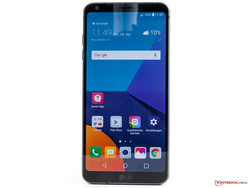
The LG G6 is not only a simple update of the high-end smartphone, but it follows a completely new concept compared to the LG G5. The plan worked and LG offers a great smartphone, which convinces with its design, good battery runtimes, great cameras, and its sturdy chassis. LG also implemented very good microphones.
LG unfortunately uses a slightly older SoC instead of the new Snapdragon 835, so we do not get features like Gigabit LTE or Bluetooth 5.0 in the G6, either. The manufacturer saved some money in other places, too. The LG G5 was equipped with an IR blaster and supported HDMI video output via USB, but both features are missing on the new G6. The regional differences are also annoying, because customers in Europe do not get the improved audio chip, wireless charging is not supported, and you only get half of the storage.
Not everything about the LG G6 is high-end, but the overall concept is very good and the improved cameras, good runtimes, as well as the compact design result in a very good smartphone.
The LG G6 is still a big step in the right direction and is even available at a lower price compared to many rivals. Important specs like the camera and the battery runtime do not have to hide behind the competition; especially the video features are unrivaled in the Android camp, and only the slightly outdated Lumia 950 XL is even better in this respect.
All in all, the LG G6 is a real smartphone highlight this year and the competition will have a hard time beating it.
LG G6
- 04/28/2017 v6 (old)
Daniel Schmidt




